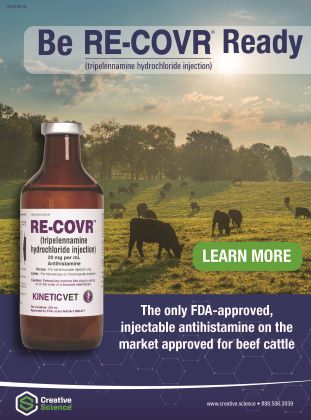Protect Your Cattle: Identifying and Controlling Common Flies on the Dairy Farm

 Protect Your Cattle: Identifying and Controlling Common Flies on the Dairy Farm
Protect Your Cattle: Identifying and Controlling Common Flies on the Dairy Farm
Flies are more than just an annoyance on your dairy operation—they are a significant threat to the health and
productivity of your cattle. With different species of flies spreading various diseases, causing stress, and
reducing milk production, it’s crucial for dairy producers to understand the types of flies that may be
present, how to identify them, and the best strategies for control. This article covers four common fly species:
house flies, stable flies, horn flies, and face flies, providing essential information to help protect your herd.
House Flies: The Disease Spreaders
House flies (Musca domestica) are ubiquitous on dairy farms, thriving in areas with abundant food waste,
manure, and decaying organic matter. These flies are notorious for their rapid breeding cycle, with females
laying up to 150 eggs at a time. Populations can explode quickly, leading to a significant fly problem in a short
period.
Identification:
• Non-metallic, dull grayish color
• Four distinct stripes on the thorax
• Pale yellowish abdomen
Health Effects and Diseases: House flies are a major vector for over 65 diseases, many of which can severely impact the health of your
livestock. For dairy cattle, house flies are known to spread mastitis, pinkeye, and Bovine Respiratory Disease (BRD). These diseases not only
reduce milk production but can also lead to increased veterinary costs and lost revenue. Control Measures: Effective house fly control begins
with understanding their life cycle and implementing an integrated pest management (IPM) program. Using products like ClariFly®Larvicide
and Starbar®Baits can help keep house fly populations in check, reducing the spread of disease and keeping your animals comfortable.
Stable Flies: The Painful Biters
Stable flies (Stomoxys calcitrans) are blood-feeding pests that cause significant stress to livestock. Unlike house flies, stable flies deliver painful
bites, particularly targeting the legs and flanks of animals. This behavior can lead to decreased feeding and production, particularly in dairy
cattle.
Identification:
• 1mm in length
• Distinct piercing-type mouthparts
• Dull-gray color, similar to house flies
• Checker-board pattern on the abdomen
Health Effects and Diseases: Stable flies cause a variety of issues across different types of livestock. In dairy cattle, their painful bites lead to
irritation during resting, feeding, and milking, which can result in a significant drop in milk production—by as much as 15 to 30 percent. Cattle
often bunch together in an attempt to avoid these biting flies, further disrupting their natural behavior and comfort.
Control Measures: To protect your livestock from stable flies, a proactive IPM program is essential. Incorporating ClariFly®Larvicide and
Starbar®Baits fly traps into your management strategy can prevent stable fly populations from growing, keeping your animals healthier and
more productive.
Horn Flies: The Persistent Pests
Horn flies (Haematobia irritans) are smaller than house or stable flies but are just as troublesome. They feed on the blood of cattle and horses,
causing irritation, stress, and the spread of disease. Horn flies are often found on the backs, shoulders, and sides of cattle, where they can
deliver up to 40 bites per day.
Identification:
• Smaller size
• Gray coloring
• Two stripes on the thorax
• Presence of tail swishing behavior in animals
Health Effects and Diseases: Horn flies are responsible for spreading several diseases, including mastitis in cattle. Mastitis is a particularly
serious concern for dairy farmers, as it leads to the inflammation of one or more teats, destroying milk-producing tissues and potentially
leading to blind quarters. This not only reduces milk production but can also decrease weaning weights in calves.
Horses pastured with cattle are also at risk, as horn flies can cause abdominal midline dermatitis, resulting in skin inflammation and discomfort.
Control Measures: An effective way to manage horn fly populations is through an IPM program that includes the use of ClariFly®Larvicide.
By targeting the flies in the manure of treated cattle, you can significantly reduce the number of horn flies on your farm, protecting both cattle
and nearby horses.
Face Flies: The Eye IrritantsFace flies (Musca autumnalis) are aptly named for their tendency to cluster around the eyes, nose, and mouth of cattle. These non-biting flies are particularly troublesome because they can transmit bacteria that cause serious eye diseases.
Identification:
• Four stripes on the thorax
• Yellowish/orange abdomen in males
• Clustering of flies on the cow’s face
Health Effects and Diseases: Face flies are notorious for spreading pinkeye (infectious bovine keratoconjunctivitis) among cattle. The flies
feed on the secretions around the eyes, nose, and mouth, causing irritation and creating an environment conducive to bacterial infection.
Pinkeye can lead to reduced weight gains, lower milk production, and increased veterinary costs, making it a costly disease for dairy farmers.
Control Measures: Controlling face flies involves a combination of strategies, including the use of
ClariFly®Larvicide. By incorporating this feed-through solution into your herd’s diet as part of an IPM program, you can reduce face fly
populations and protect your cattle from pinkeye and other diseases.
Flies are more than a nuisance—they are a significant threat to the health and productivity of your operation. By understanding the types of
flies that affect your farm and implementing an integrated pest management program that includes products like ClariFly®Larvicide, you can
reduce fly populations, minimize the spread of diseases, and keep your animals healthy and productive. Protect your investment by staying
vigilant against these common pests and taking proactive steps to control their populations on your dairy farm. To learn more, visit
CentralFlyControl.com.
Content and images provided by:





